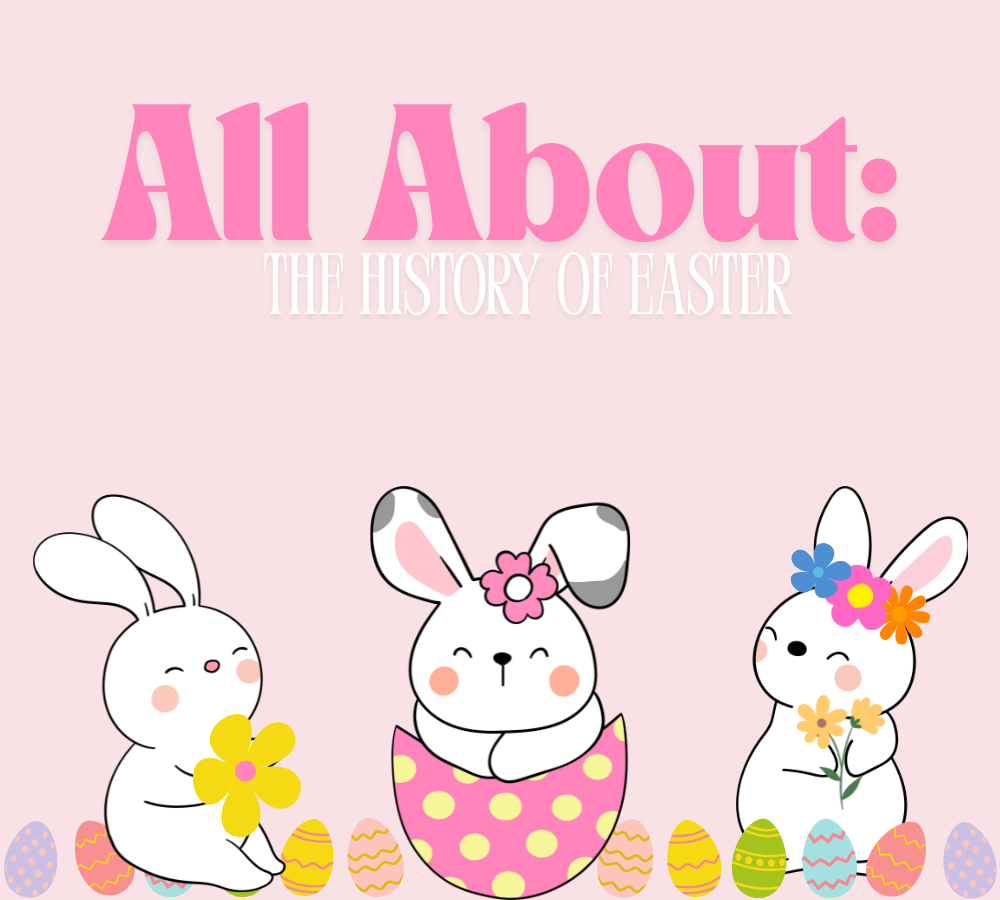The build-up to Easter every year leads to a flurry of traditions, ranging from religious observances like Lent and Good Friday to secular customs involving chocolate, bunnies and eggs. The diverse origins and meanings of these traditions have much religious and cultural importance. The occasion carries massive influences rooted in religious and cultural backgrounds. So, although the holiday commemorates the resurrection of Jesus, the customs surrounding it reveal a diverse and layered history.
To begin, let’s consider the origin of the term itself. The word “Easter” comes from “Eostre,” an Anglo-Saxon goddess associated with spring and fertility. An 8th-century monk named Bede recorded this connection. Outside of his notes, little evidence supports the link, prompting historians to debate its validity even today.
The holiday holds deep significance within Christianity, as followers celebrate Jesus’ ascension from this world. This event carries enormous weight, since Christians understand Jesus as God, and his time on Earth forms the foundation of the faith. Early Christians celebrated this event alongside Passover, a Jewish holiday. This overlap led people in some cultures to refer to Easter by other names. For instance, in many European languages, people call the holiday “Pascha,” the Greek word for Passover.
Later on, different methods of date calculation caused confusion and disagreement, which historians call the “Easter Controversy.” In 325 AD, the Council of Nicaea attempted to standardize the celebration date, setting it as the first Sunday after the first full moon following the vernal (spring) equinox—based on the Gregorian calendar (also known as the English calendar). While cultural links to Passover persist, the official split occurred in 325 AD due to the divergence in calendar systems.
Setting aside etymology and date disputes, let’s explore the familiar symbols—eggs and bunnies. Eggs have long symbolized new life and rebirth in many traditions. Christians in medieval Europe often fasted from eggs during Lent and saved them as a treat for Easter Sunday. Where did the decorating tradition originate? It became popular, possibly due to deeper, darker meanings. Decorated eggs may have represented the red eggs in Eastern Orthodox Christianity, which symbolize the blood of Jesus. Thankfully, the Easter Bunny carries a much more cheerful origin. German folklore linked rabbits with fertility. When these German immigrants moved to America, they brought this tradition here. Over time, their customs evolved into the modern Easter Bunny we know and love today in the US.
People around the world celebrate Easter in diverse ways. Even Christians themselves differ in how they mark the occasion. Some of the most common practices include church services, sunrise gatherings, egg hunts, festive meals and chocolate exchanges. Regardless of how people celebrate—or whether they celebrate at all—many of today’s Easter traditions draw influence from diverse communities and cultures. Some rooted in joyful tradition, others with more haunting or unsettling origins. Still, the core messages of Easter—renewal, hope, and celebration—continue to echo now as they did in the early years.


